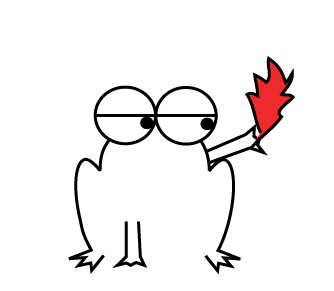Seabeck Haiku Getaway (Seabeck, WA)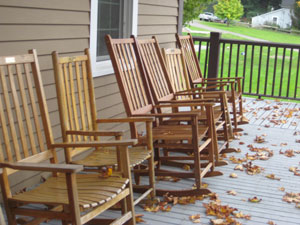
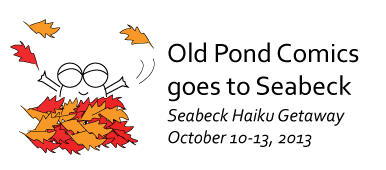
The Seabeck Haiku Getaway is the annual gathering of the Haiku NorthWest haiku group.
The rocking chairs and fallen leaves on the porch of the Seabeck Conference Centre are iconic of this haiku retreat that takes place in autumn in a quiet nature surrounding.
Seabeck Haiku Retreat 2013
During Seabeck Haiku Retreat 2013, I was the official cartoonist-in-residence: I created comics that were presented at the closing session.
I also did a presentation titled The French Haiku: An overview of French Haiku Activities.
Seabeck | Quizz | Haiku displays | Comics | Why you should go | The French Revolution
Going to Seabeck (Washington) is really fun as it includes a nice drive and, in some cases, taking a ferry.
At the Canada-U.S. border, we told the guard we were going to a haiku conference. He said: "Haiku? Like the poem you write in school? It sounds very... intellectual."
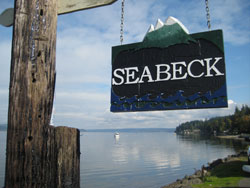
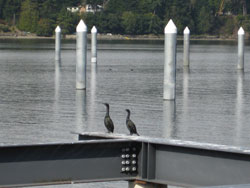
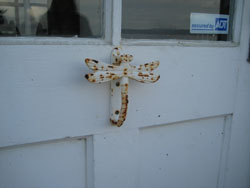
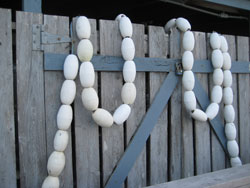
Seabeck Conference Centre
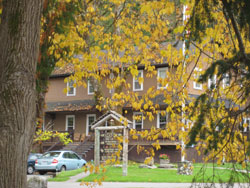

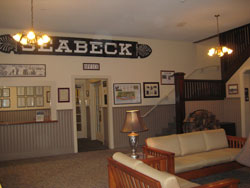
Accommodations
The rooms were located in litte houses that you share with other people. Great feeling of conviviality. I was in the newer buidling, Huckleberry. Our room H5 was big with a writing desk (where I spent all night doing comics until 4am) and a private bathroom.
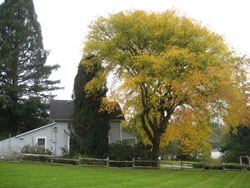
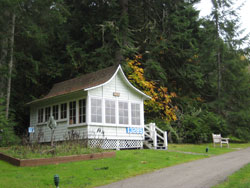
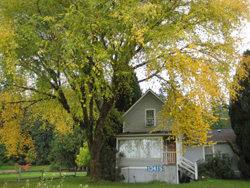
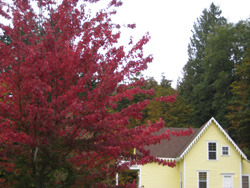
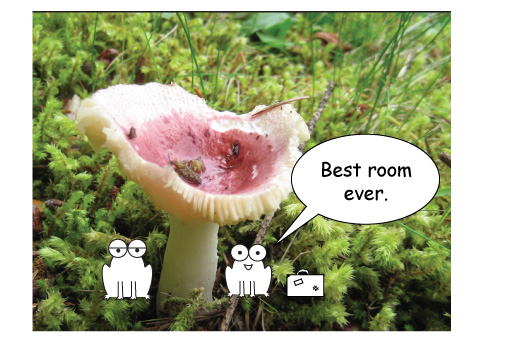
Food
The food at the Seabeck Haiku Conference was excellent. Breakfast was from 8.00-8.45, lunch from 12.00-12.45 and dinner from 6.00-6.45 As you got in the dinning, you could smell the aroma of the food. As soon as you sat down, they would serve you hot meal in a plate big enough for the 8 people around the table, a hot sidedish and a cold sidedish. Dessert was already on the table. I've never eaten so well in my life!
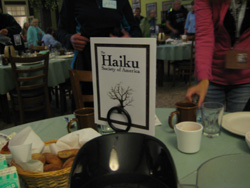
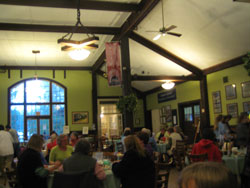

Wildlife
On your way to and from the conference centre, you'll often spot deers, so get your camera ready.
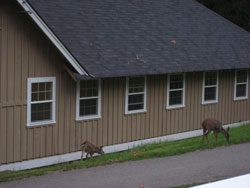
The Bouncing Bridge
The Bouncing Bridge takes suspension bridge to a all new sismic level. Cross the bridge with fifty people, right after the Seabeck Group photo, and fun is guaranteed (unless you have motion sickness).

Flowers
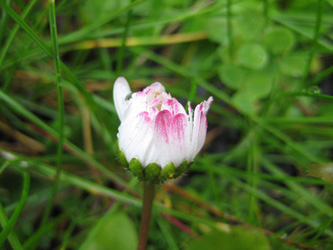
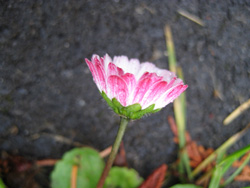
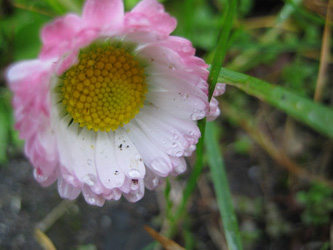
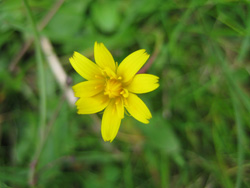
Textures
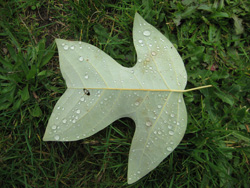
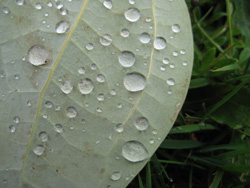
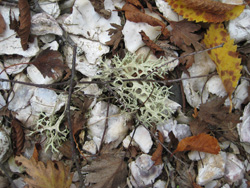
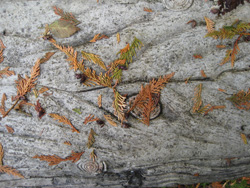
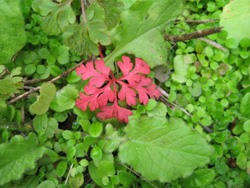
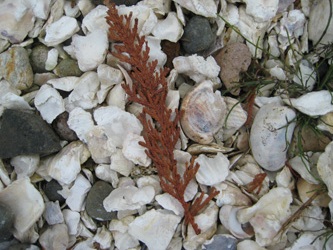
Autumn Leaves
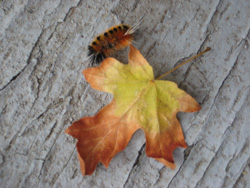
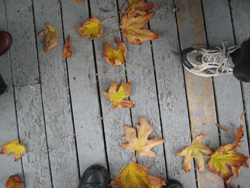
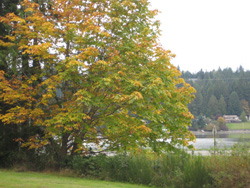
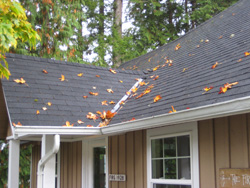
Mushrooms
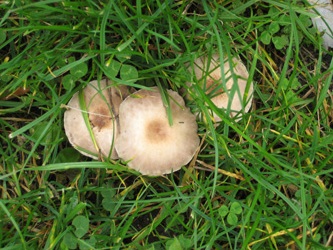
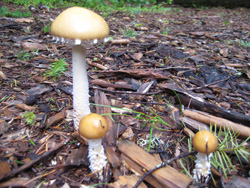
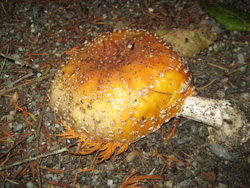
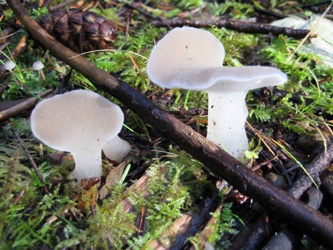
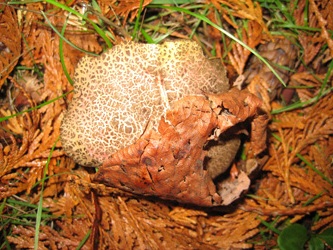
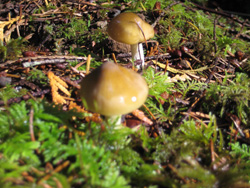
Ginko walk to the Historic Seabeck Cemetery:
Kukai
After the cemetery walk, we held a kukai. Everybody wrote a haiku and we voted for our favorites. My haiku won ex-aequo with Deborah Kolodji:
inch worm
how do I
begin
-- Jessica Tremblay
Playground
The playground was filled with different balls. Each ball made me think about the various people who attend haiku conferences. What kind of ball are you?
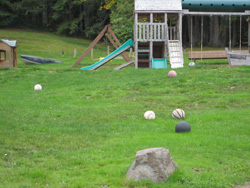
Quizz: What kind of conference attendees are you?
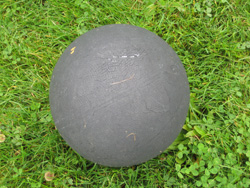 |
1. The Hardcore. The first person to arrive and the last person to leave the conference. Usually, the conference organizer. |
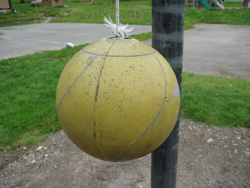 |
2. The Tetherball. Likes to collaborate. Usually the first person to propose to write a renku. Will often ask you to read and comment on their haiku. Likes to bounce haiku back and forth. |
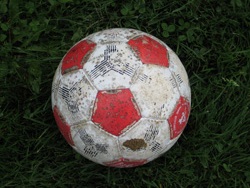 |
3. The Odd Ball. The person who comes up with unusual subjects for an activity or presentation. Becomes a huge success — often the highlight of the conference. Attendees will remember them many years later. |
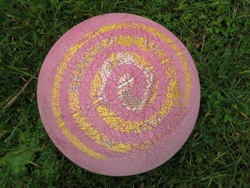 |
4. The artist. Fills her sketchbook, takes photographs, or makes a crankie in a few hours… When you ask them if they’ve written a haiku during the conference, they blush. No, they didn’t have time. |
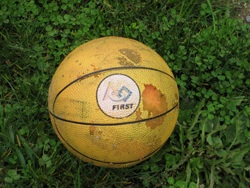 |
5. The Basketball. Usually, an academic. Classic move: will hit you with a hard question during your presentation. |
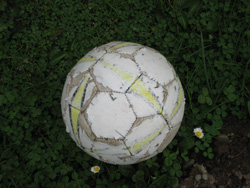 |
6. The Hardball. Attends ten conferences a year. This “small conference” is a real treat for them since they don’t have to present. They can rest and enjoy themselves, but “Boy, Oh Boy!” are they tired. |
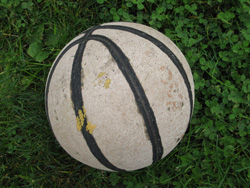 |
7. The Straight Ball. This person wants to see everything, so she’s keeping a tight schedule. Always on the move. Usually, you’ll cross them in the hallway, but they don’t have time to talk, they have to go to the next session. |
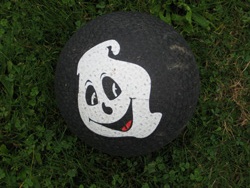 |
8. The Ghost Ball. Comes to one session or two, then disappears for a nap. Usually elderly. (We love them. We wished we could see more of them.) |
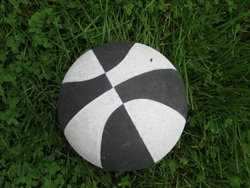 |
9. Black and White Ball: writes both haiku and tanka and excels in both. Not sure which one she likes best. |
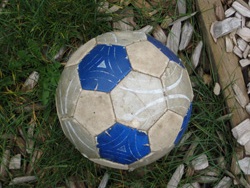 |
10. The Long Lost Ball. Very quiet. Doesn’t go to conferences often. In fact, hasn’t written a haiku in years. Came the conference to rekindle their romance with the genre. Leaves the conference more confused than when they arrived. |
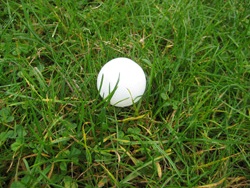 |
11. The Ping-Pong Ball: you may be new to haiku, but during the conference, you will write a haiku that will blow us away — that’s guaranteed! |
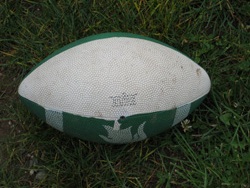 |
12. Football. Most of us. You attend conference regularly to catch up with your friends. You absorb knowledge like a sponge. |
8 clever ways to display your haiku
Here are 8 clever ways to display your haiku (as seen at the Seabeck Haiku Getaway 2013).
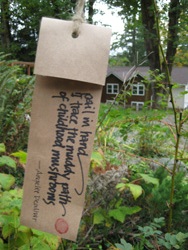 |
1. Weathergram: hang your haiku outside for everybody to read.
Our weathergrams featured poems from Haiku World, by William Higginson |
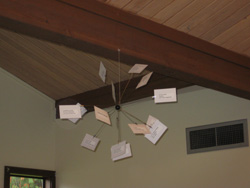 |
2. Haiku Mobile (aka “The Sputnik”), an original idea by Tanya McDonald. This “Sputnik” features poems by 2013 guest speaker Marco Fraticelli) |
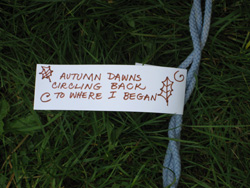 |
3. On a labyrinth Margaret McGee guided us through the construction of a labyrinth which we then decorated with haiku and natural objects.The labyrinth stayed for the entire conference, for everybody to enjoy.) |
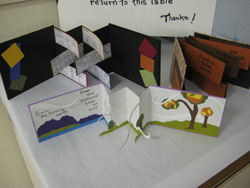 |
4. Flagbook (creations by Susan Callan): Susan Callan will teach a flagbook workshop at Seabeck Haiku Getaway 2014. Isn’t that a beautiful way to display your haiku?) |
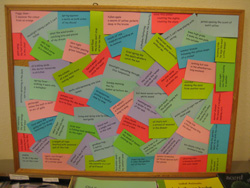 |
5. Haiku Board (creation by Susan Constable):
Susan Constable celebrates each published haiku by printing them on a colorful piece of paper and putting them on a board. She now has two boards in her office! Wow!) |
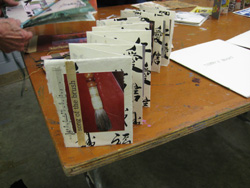 |
6. Mini-books (creations by Terry Ann Carter):
(Terry Ann Carter displayed her beautiful handmade books featuring her haiku.)
|
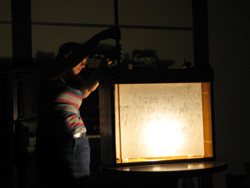 |
7. A crankie! Dejah Leger created a crankie featuring all the poems submitted at the kukai. The crankie is a storytelling device that allows you to unfold a story on a big roll of paper. There's a light in the back and you use cutouts (a bit like a shadow theatre) to create images. |
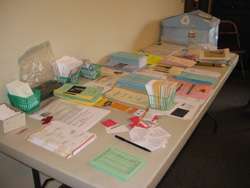 |
8. Leaflets and promotional material. |
Conference Comics

I was the official Cartoonist-in-residence during the Seabeck Haiku Getaway (organized by the Haiku NorthWest haiku group) from October 10-13, 2013.
During the event, I created thirteen comics that were presented Sunday Oct 13, on the last day of the conference. One Old Pond vignette (featuring Kaeru playing in autumn leaves) was included in the printed program.
Read an interview about my experience of cartoonist-in-residence at Seabeck.
Watch a digital story about the ginko walk to the Historic Seabeck Cemetery.
Create your nametag
Before you go at Seabeck Haiku Getaway, you have to create your own nametag . People used lots of creativity to create a nametag that would represent them.

Drinking from a fire hydrant
At the beginning of the conference, Michael Dylan Welch warned participants to pace themselves. Going to a haiku conference, and attending session after session, can feel a bit like "drinking from a fire hydrant", he said.
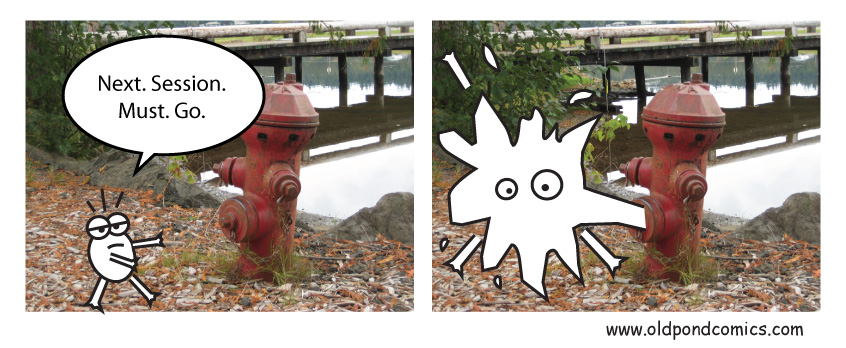
Freebie table
At every conference, you can bring a leaflet or something to give to the attendees so they remember you.


The snack table
Not only were we fed very well at the Seabeck Conference Centre, but attendees were encouraged to bring snacks to share. The snack table was jammed pack full of goodies. You could have eaten a full meal there!
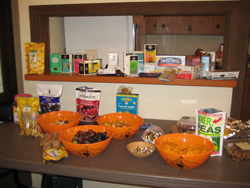

The book table
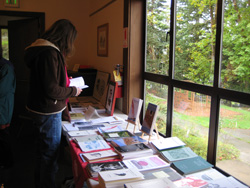
Marco Fraticelli (guest speaker)
I was really happy to have the chance to spend some time with Marco Fraticelli, a poet from Haiku Canada that I only get to see when I attend Haiku Canada weekend (it's an annual conference, but I only get to go every two years or so). Marco Fraticelli was the first hadjin I met, totally by chance, while I was studying haiku at the National Library of Canada, in Ottawa.
Just like Marco, Kaeru the frog loves bringing his kids to the beach.

The Wordless Poem
The Wordless Poem (written by Eric Amann) is one of Marco Fraticelli's favorite book about haiku. However, it is not a book for beginners and should not be used to teach haiku to young children...

The flock of crows
The guest speaker Marco Fraticelli told the story of a painter in ancient China or Japan who was commissioned to paint four panels representing a flock of crows. Instead of painting numerous crows, like you would expect, he left three panels blanck and, on the fourth one, he painted half a crow in flight, as if a flock of crow was just there and had just flown away.
Marco made the analogy with haiku: it's often what's not there that counts, what people imagine. Readers fill the gap in their imagination and complete the image. That was a great lesson.
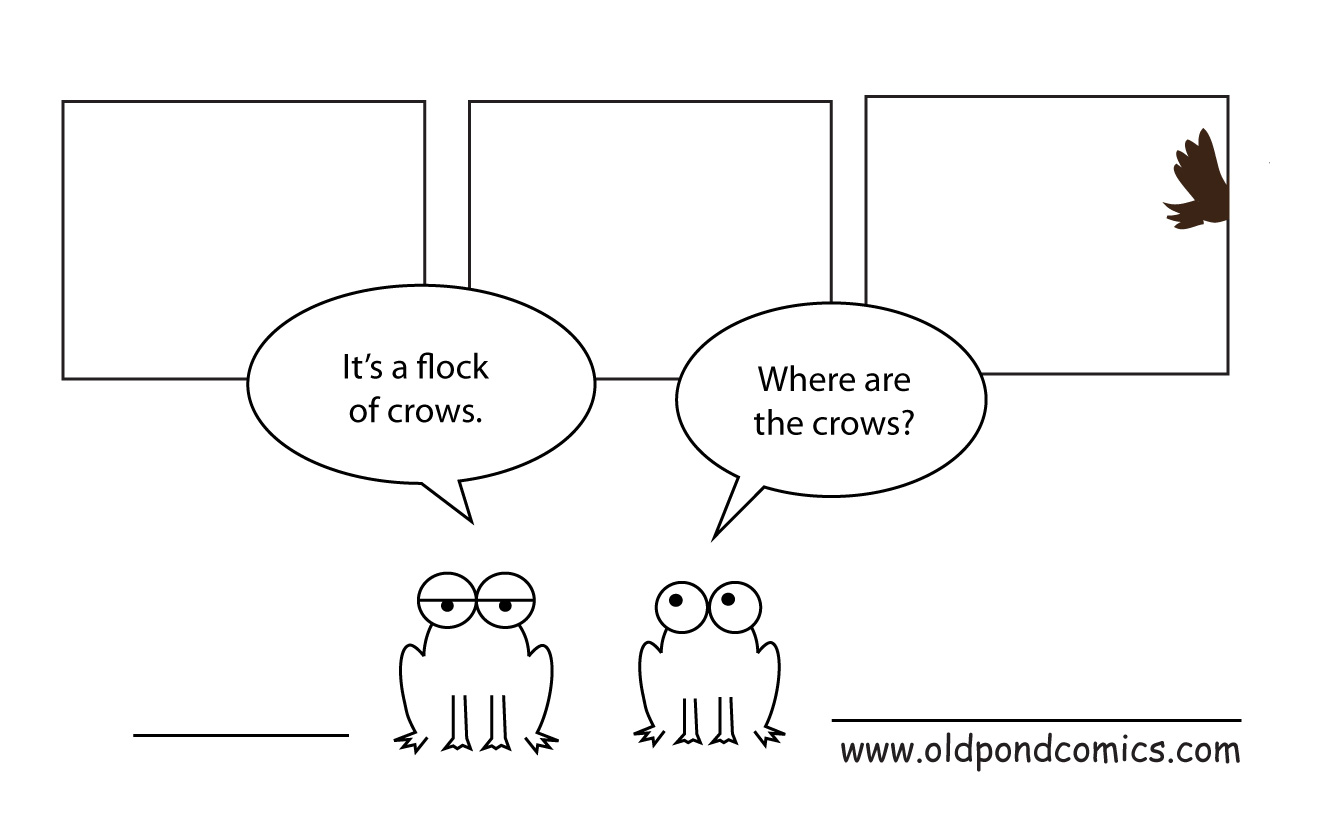
Labyrinth
One of our favorite activities at Seabeck was creating a labyrinth. Following instructions from the leader Margaret McGee, participants split into two teams. Each team had "builders" who built the labyrith, and "decorators" who decorated the labyrinth with leaves, feathers, branches, shells, and haiku.
The labyrinth stayed there during the whole conference and people were able to enter the labyrinth and do a walking meditation. As you entered the labyrinth, it's good to recite a mantra, such as "I am a pilgrim seeking."
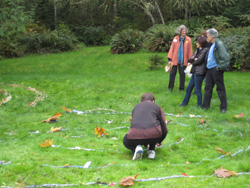
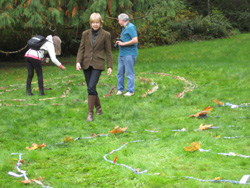
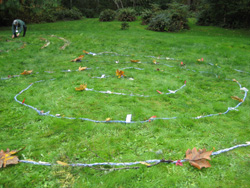


A leaf falls loneliness (paper by Michael Dylan Welch)
E. E. Froggins ( E.E. Cummings's cousin) is also a poet; he wrote this happier version of the leaf falls poem.
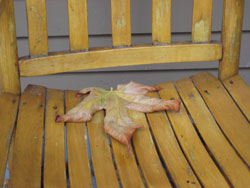
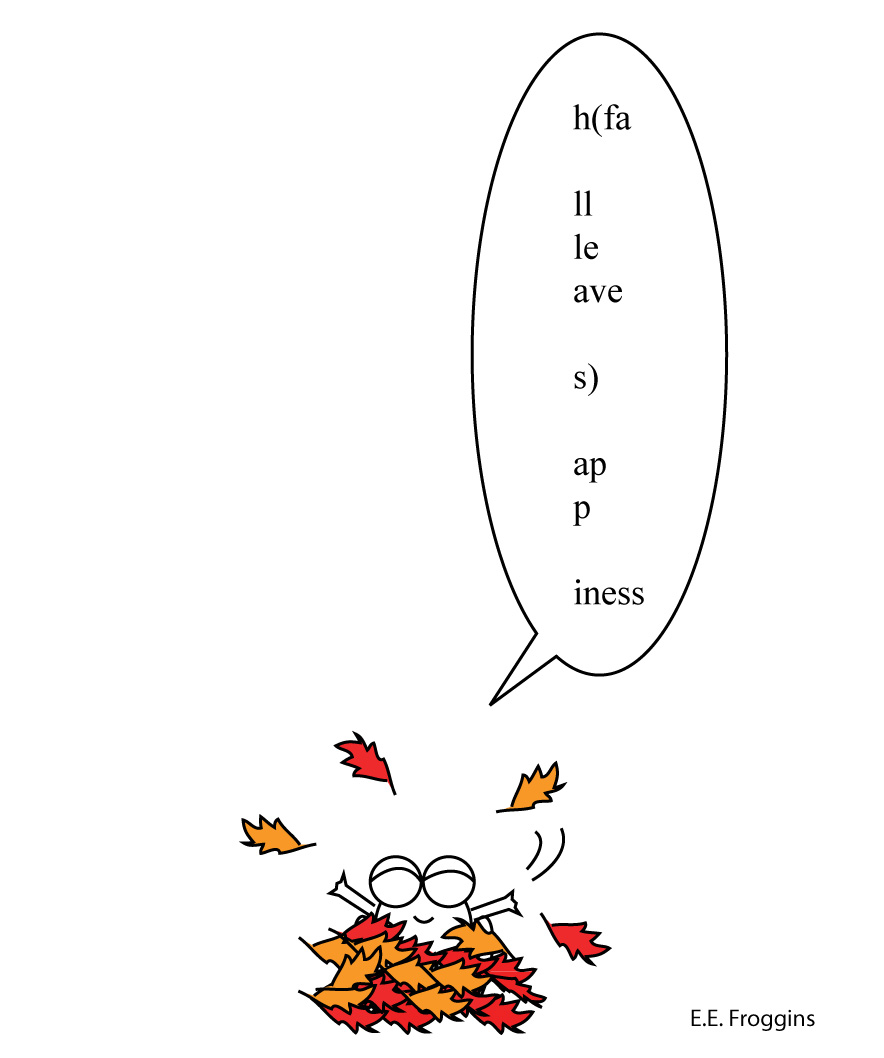
The Sputnik
At Seabeck, a suspended card holder called "The Sputnik" hangs from the ceiling and holds haiku written on index cards. This year, the Sputnik held a dozen haiku written by the guest of honor Marco Fraticelli.

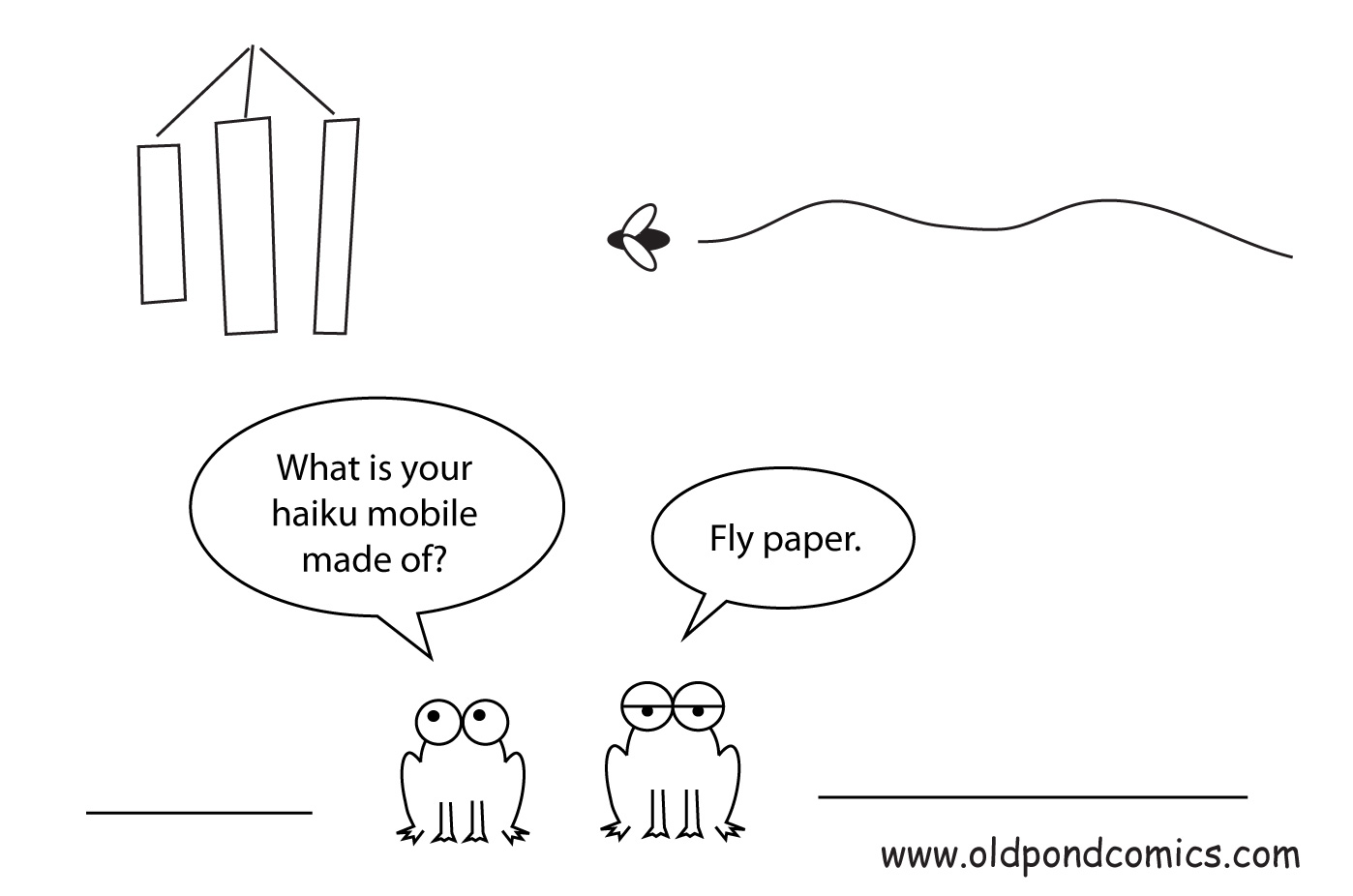
Interview with Jessica Tremblay, author of Old Pond Comics and cartoonist-in-residence
October 14, 2013
What does a cartoonist-in-residence do?
A cartoonist-in-residence will go to your haiku conference, attend as many conference sessions as possible and create comics that will summarize each sessions in only three panels. Being cartoonist-in-residence involves staying up all night and producing as many comics as possible.
How did you find the time to make the comics?!
The majority of the Seabeck comics were produced in two nights: on Friday Oct. 11 (10pm to 4am) and Sat. Oct. 12 (11pm-4am). Then, after only 3 hours of sleep, I would get up at 7am to make more comics. I had to skip two communal breakfasts, on Sat and Sunday (missing the best breafkast of the week, I was told: cheese-filled crepes!). In the morning, I sustained myself with cinnamon scones I had brought from home so I could make as many comics as possible. Skipping some sessions and social activities was sometimes necessary in order to make more comics.
Being a cartoonist-in-residence puts you in a strange situation: you have to attend all the sessions to know what they're about (so you make comics about them), but while you are attending sessions, you are not making comics. It's quite a connundrum. Basically, the only solution is to attend as many sessions as possible during the day (drafting comics in my notebook) and then creating the comics at night while everybody is sleeping. I use Adobe Illustrator to make the comics.
But doing the comics is the easy part... I also have to present them. Creating a Powerpoint presentation at 4 am is quite a challenge. Then, you have to present them - remaining coherent (difficult), funny (I suppose) and charming (you tell me!) - even though you've had only 3 hours of sleep that night.
How long does it take you to make the comics?
One comic takes approximatively 1 hour to make. I'm estimating I've spent around 15 hours making comics, and 2 hours to prepare the powerpoint presentation. And I'm not counting the time I spent drafting, attending sessions, taking pictures to use as reference for the comics, etc. Cartoonist-in-residence is a full time job.
How did you start?
I've been attending haiku conferences since 2006. I used to summarize the sessions on my blog for people who did not have the chance to attend. My summaries were long blocks of text, without any pictures. It was quite long and boring to read, not to mention time consuming to write, so when I attended Haiku Canada 2009 in Vancouver, I decided to use comics to summarize, in three panels, the sessions. I produced seven comics that I posted on my blog and they became a huge success.
In Haiku North America 2011 in Seattle, I brough my laptop with me and created comics that I posted on my blog and Facebook page every night, recapping the events of the day.
For Haiku North America 2013 on the Queen Mary (Long Beach, CA), I sent a proposal and became an official cartoonist-in-residence for the first time. My comics were featured in the printed program, on the HNA blog, and their Facebook page, and the comics created during the conference were presented at the closing session. Seabeck Haiku Getaway 2013 was my second experience as an official cartoonist-in-residence.
Did you invent this concept of cartoonist-in-residence?
I'm not sure. Perhaps there are other cartoonists-in-residence out there. I haven't checked. All I know is that I was always intrigued by the concept of "writer-in-residence" and, knowing that, when attending haiku conferences, I was going to make comics to summarize sessions anyway, I decided to send a proposal to the conference organizers to see if they'd be interested in having me as official cartoonist-in-residence. They loved the idea!
Do you have another residency coming up?
Yes. I will be cartoonist-in-residence at Haiku Hot Springs (Arkansas) on November 1-2, 2013. Attendees can send me their bio, photo (optional) and 5 haiku at tessinthewest AT hotmail DOT com to receive a surprise at the conference.
Where do I contact you if I want to hire a cartoonist-in-residence for my next haiku event?
Contact me at tessinthewest AT hotmail DOT com
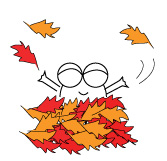
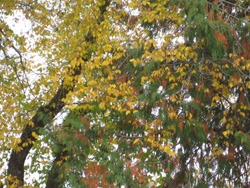
Thank you
Thank you to Michael Dylan Welch and Angela Terry for organizing the Seabeck Haiku Getaway 2013. The event could not have been better! And thank you to all participants for their warm welcome.
The next Seabeck Haiku Getaway will take on October 16-19, 2014 at the Seabeck Conference Centre. Don't miss it!
Why you should attend
Five reasons you should attend the Seabeck Haiku Getaway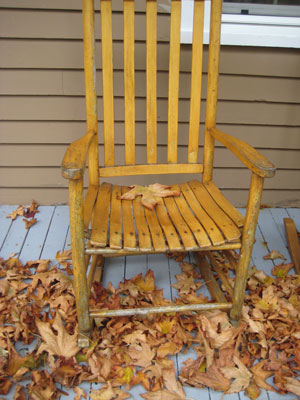
Conference rate is a real bargain (approx. $250 and it includes all the conference sessions, the accommodation and the delicious meals)
The food
The bouncing bridge
Hanging out with Michael Dylan Welch and the wonderful poets from the Haiku Northwest group and surrounding areas
Amazing accommodation at Seabeck conference centre, spectacular scenery, free activities (tennis, boat, ping pong, balls, swimming, hiking, etc.)
The French Revolution: an overview of French Haiku Activities
[top]
Next Chapter: Seabeck Haiku Getaway 2014>>

